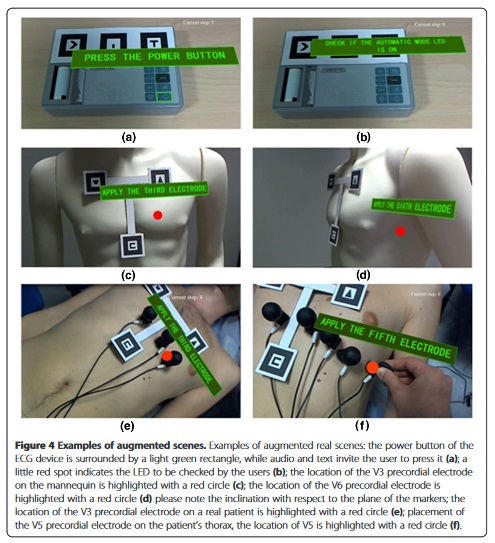The global population is getting bigger and bigger every day (the world’s population was at 7.5 billion the last time we checked), but physicians around the world are not growing at this rapid rate. There are only about 10 to 15 million doctors around the world and, well, the proportion is growing broader as you may imagine. Because of this, the need to develop an innovative method to solve certain kinds of problems is a must right now. It’s important to make the most out of every doctor available because, let’s face it, everybody needs one at some point in their life. But how can we do this? What’s a better (yet still ethical) way to allow a physician to solve problems and crises for people within the vicinity of a thousand of miles?

Yes, we are going to talk to you about Augmented Reality now, but what you don’t know is how it’s going to be used to solve this (and many other) problems in an efficient, intelligent, and absolutely amazing way. In some scenarios, healthcare may require untrained personnel to interact with medical devices and patients, but there is a clear difference in results when a medical device is operated properly. Correct usage and connection with a patient’s body is imperative to reach a diagnosis that could potentially represent life or death. One of these scenarios could be using the correct method and technique to perform an electrocardiogram (ECG) exam.


Why is this so important? The ECG is the exam that is performed when there is a clinical suspicion of a myocardial infarction (MI), or a potentially fatal arrhythmia, for example. Most of the time, EMT professionals or volunteers are the first responders that reach these patients, and while there are often efforts to train them to perform an ECG correctly, sometimes these people aren’t properly rehearsed. Trust us, it’s very important to diagnose an MI on time. Because of this, researchers at the Department of Electrical Engineering and Information Technology of the University of Naples “Federico II” at Naples, Italy have developed an Augmented Reality app built to support untrained users in performing an ECG test.

How does this app work? A simple set of markers is attached to the ECG device and onto the patient’s thorax, allowing for calibration of the system. The operators wear a Head Mounted Display (HMD) in order to see the AR content. After calibration, the operator is then able to see the display of the current scene augmented in real-time with buttons, switches, ports of the ECG device, and the location of precordial leads (indicated with additional pointers, text boxes and audio to help the operator perform the procedure adequately). All of this is built based on the ARToolKit, an open source AR library. The end results were pretty amazing – ten volunteers previously untrained to use the ECG device, but supported by the AR app, were able to carry out a complete ECG test on mannequins and real patients in a reasonable time (about 8 minutes on average). Errors placing precordial electrodes were an average of less than 3 mm on mannequins, and below 7 mm with the real patients. These great results will enable certain training effectiveness in the future.


Image source: https://www.ncbi.nlm.nih.gov/pmc/articles/PMC4277827/pdf/12938_2014_Article_905.pdf
Maybe it’s not really clear why this is a great development, but ARinMED is here to let you know. A patient with chest pain must be considered a myocardial infarction until proven otherwise. From the very first pain, until treatment is administered is really important for the prognosis of the patient, and treating the patient quickly will give the patient a better quality of life. Let’s recap: Allowing normal, untrained people to learn the basics on real time about how to perform an ECG is going to save more lives, could make anyone potentially prepared to give first aid anytime, anywhere – and it’s all because of AR. What great time to be alive, don’t you think?
Let us know what you think in the comment section!!









The more readily available we make medical care to those most in need of it, our whole country will have an improved health-outlook. With baby boomers now reaching retirement age and beyond, the explosion of telemedicine onto the scene could not have come at a better time.